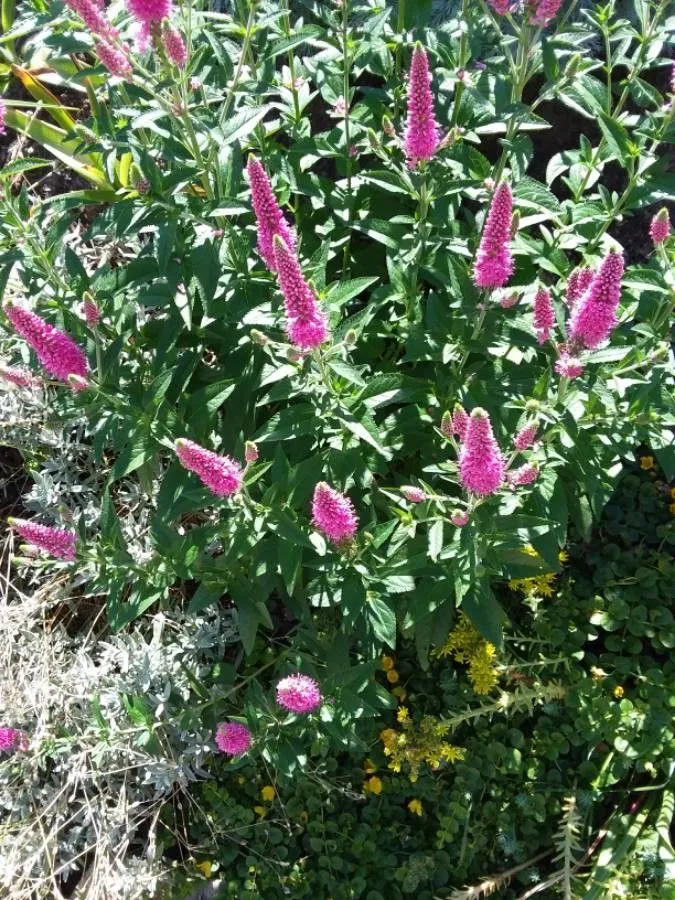
Author: Hook.
Bibliography: Fl. Bor.-Amer. 1: 172 (1832)
Year: 1832
Status: accepted
Rank: species
Genus: Spiraea
Vegetable: False
Observations: W. Canada to W. U.S.A.
Steeplebush, scientifically known as Spiraea douglasii, is a fascinating member of the Rosaceae family. This deciduous shrub is widely recognized for its striking appearance and its adaptability to various environments. Named and described in Flora Boreali-Americana by Hooker in 1832, Steeplebush has since garnered interest from botanists and horticulturists alike.
Native to the western regions of Canada and the United States, Steeplebush thrives in moist, open habitats such as wetlands, meadows, and alongside rivers. Its robust nature allows it to adapt to both the lush forests of the Pacific Northwest and the slightly drier climates of the interior mountainous regions. The plant’s geographical range underscores its versatility and resilience.
Steeplebush typically reaches heights of around 3 to 6 feet, characterized by its slender, erect stems which give rise to its common name. The leaves are lance-shaped, with serrated edges and a vibrant green hue that transitions to yellow and red shades in autumn, adding seasonal interest to natural landscapes.
One of Steeplebush’s most iconic features is its flowering spikes. During summer, this shrub produces dense, cone-shaped clusters of tiny, pink to purple flowers. These blooms not only enhance the aesthetic appeal of the plant but also attract a variety of pollinators including bees, butterflies, and other beneficial insects. The flowering period usually extends from June to September, offering a long season of visual and ecological benefits.
In addition to its ecological contributions, Steeplebush is valued for its low-maintenance requirements and its role in erosion control. Its extensive root system helps stabilize soil, making it an excellent choice for naturalizing landscapes and restoring disturbed areas.
Though not commonly used in traditional medicine, Steeplebush has been noted for its historical importance among indigenous peoples of North America, who utilized various parts of the plant for their medicinal properties.
As an ornamental plant, Spiraea douglasii continues to gain popularity in garden design, particularly in naturalistic and wildlife-friendly gardens. Its hardy nature, coupled with its beautiful and prolonged blooming period, makes it a desirable addition for those looking to create sustainable and ecologically integrated landscapes.
In conclusion, Steeplebush stands out not only for its attractive floral display and adaptable growth habit but also for its significant role in supporting local ecosystems. Whether observed in the wild or cultivated in gardens, Spiraea douglasii remains a notable and cherished species within the vast and diverse Rosaceae family.
Deu: douglas’ spierstrauch, douglas-spierstrauch, oregon-spierstrauch
Eng: douglas’ spirea, douglas’s spirea, steeple-bush, rose spirea, steeplebush, douglas’ meadowsweet, douglas’ spiraea, hardhack, pink spiraea, western hardhack
Nld: douglasspirea
Lav: duglasa spireja
Dan: rævehale-spiræa
Fra: spirée de douglas
Nob: douglasspirea
Swe: douglasspirea, punapajuangervo
Nno: douglasspirea
Fin: punapajuangervo
Ces: tavolník douglasův
Cym: erwain douglas
En: Steeplebush, Douglas’s spirea, Rose spirea, Douglas’ Meadowsweet, Douglas’ spirea, Douglas spirea, Menzies’ spirea, Hardhack steeplebush, Hardhack, Steeple-bush, Douglas’ spiraea, Pink spiraea, Western hardhack
Be: Спірэя Дугласа
Cs: Tavolník Douglasův
Da: Rævehale-spiræa
Nl: Douglaspluimspirea, Douglasspirea
Fi: Punapajuangervo, Lännenpajuangervo
Fr: Spirée de Douglas
De: Douglas-Spierstrauch, Douglas’ Spierstrauch, Oregon-Spierstrauch
It: Spirea
Lv: Duglasa spireja
Nb: Douglasspirea
Nn: Douglasspirea
Sv: Douglasspirea, Punapajuangervo
Cy: Erwain Douglas
Taken Jul 2, 2019 by macari kevin (cc-by-sa)
Taken Jul 19, 2019 by Kerstin Klippel (cc-by-sa)
Taken Jun 22, 2019 by Dieter Wagner (cc-by-sa)
Taken Jun 22, 2019 by Dieter Wagner (cc-by-sa)
Taken Jun 22, 2019 by Dieter Wagner (cc-by-sa)
Taken Jul 29, 2022 by David Hocken (cc-by-sa)
Taken Jun 22, 2021 by Anastasia (cc-by-sa)
Taken Sep 1, 2021 by Dorothee Rugevics (cc-by-sa)
Taken Jul 4, 2019 by Marlaguette (cc-by-sa)
Taken Jun 22, 2019 by Dieter Wagner (cc-by-sa)
Taken Aug 28, 2022 by Jim Knopf (cc-by-sa)
Taken Jul 29, 2022 by David Hocken (cc-by-sa)
Taken Aug 28, 2022 by Jim Knopf (cc-by-sa)
Taken Jun 20, 2021 by Rolf Vogelfänger (cc-by-sa)
Taken Jun 28, 2018 by Teresa Zbiciak (cc-by-sa)
Taken Jul 20, 2020 by Семенова Ольга (cc-by-sa)
Taken Jun 23, 2021 by Marieke Wiersma (cc-by-sa)
Taken Jun 6, 2022 by Tristan Jaton-Maria (cc-by-sa)
Taken Sep 2, 2013 by Tela Botanica − Jean-Jacques HOUDRÉ (cc-by-sa)
Taken Jul 29, 2019 by biehle (cc-by-sa)
Taken Aug 6, 2017 by mad (cc-by-sa)
Taken Jul 6, 2021 by Kate.Elliott KElliott (cc-by-sa)
Taken Jun 27, 2020 by Andrew Browning (cc-by-sa)
Taken Aug 27, 2020 by doveyli (cc-by-sa)
Taken Aug 11, 2019 by Schweizer Philipp (cc-by-sa)
Taken Jun 23, 2020 by jan De Pauw (cc-by-sa)
Taken Aug 14, 2019 by Menno Wolff (cc-by-sa)
Taken Sep 26, 2014 by EOL − Wendy Feltham (cc-by-nc)
Taken Aug 12, 2022 by Anatas (cc-by-sa)
Taken Oct 29, 2019 by Alain Bureau (cc-by-sa)
© copyright of the Board of Trustees of the Royal Botanic Gardens, Kew.
Growth form: Rhizomatous
Growth habit: Shrub
Growth rate: Moderate
Ph maximum: 7.5
Ph minimum: 5.5
Light: 7
Atmospheric humidity: 7
Soil nutriments: 5
Family: Myrtaceae Author: (F.Muell.) K.D.Hill & L.A.S.Johnson Bibliography: Telopea 6: 402 (1995) Year: 1995 Status:…
Family: Rubiaceae Author: Pierre ex A.Froehner Bibliography: Notizbl. Bot. Gart. Berlin-Dahlem 1: 237 (1897) Year:…
Family: Sapindaceae Author: Koidz. Bibliography: J. Coll. Sci. Imp. Univ. Tokyo 32(1): 38 (1911) Year:…
Family: Asteraceae Author: A.Gray Bibliography: Pacif. Railr. Rep.: 107 (1857) Year: 1857 Status: accepted Rank:…
Family: Fabaceae Author: Medik. Bibliography: Vorles. Churpfälz. Phys.-Ökon. Ges. 2: 398 (1787) Year: 1787 Status:…
Family: Aspleniaceae Author: (Cav.) Alston Bibliography: Bull. Misc. Inform. Kew 1932: 309 (1932) Year: 1932…